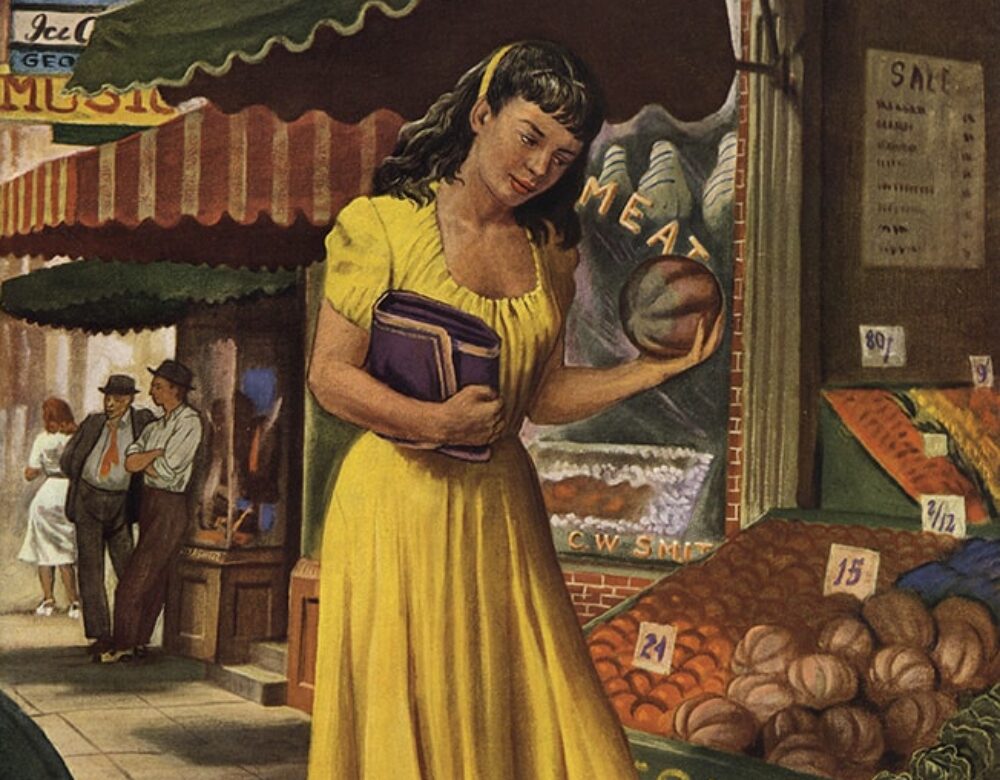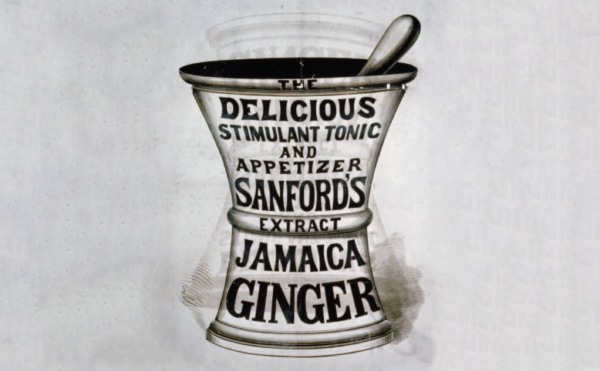Most people know the story of penicillin. Or they think they do. It involves microbiologist Alexander Fleming and his accidental discovery of one of the most important drugs in history. However, that’s not the whole story. In order to create penicillin, Fleming needed mold. And that’s where Mary Hunt, a scientist with an eye for interesting molds, comes in.
About The Disappearing Spoon
The Science History Institute has teamed up with New York Times best-selling author Sam Kean to bring a second history of science podcast to our listeners. The Disappearing Spoon tells little-known stories from our scientific past—from the shocking way the smallpox vaccine was transported around the world to why we don’t have a birth control pill for men. These topsy-turvy science tales, some of which have never made it into history books, are surprisingly powerful and insightful.
Credits
Host: Sam Kean
Senior Producer: Mariel Carr
Producer: Rigoberto Hernandez
Associate Producer: Sarah Kaplan
Audio Engineer: Jonathan Pfeffer
Transcript
A fight nearly broke out right there in the fruit aisle.
The setting was a grocery store in Peoria, Illinois. The owner, John Scoutaris, prided himself on stocking fresh, healthy fruit. But that day in 1943, he found a moldy grapefruit sitting out. He quietly palmed it, then slipped away to dispose of it.
But not before a customer caught him. Mary Hunt. To Scoutaris’s horror, Hunt called out. Wait, is that moldy?
Scoutaris could have died. He hid the grapefruit in his apron and hissed, No.
But Mary wouldn’t listen. She marched over to see it.
By now, other customers were looking. Scoutaris started sweating, pleading with Hunt to zip it. But she insisted on seeing the grapefruit. She claimed it was a matter of national security.
Natural security? Scoutaris thought she’d gone soft in the head. But then he remembered that Mary did work in a government biology lab.
Mary then doubled-down. She told Scoutaris, That moldy grapefruit could win the war for the Allies.
It sounded unlikely. But to get her out of earshot of other customers, Scoutsris steered her into the back to chat.
What Scoutaris couldn’t have known was that this tiff, and his decision to indulge Mary Hunt, would indeed arguably win the war for the Allies. Mold was our secret weapon fighting Germany and Japan. Why? Because that mold produced one of the most important drugs in history—penicillin.
This story idea came from dedicated listener Bea in Minneapolis.
Most people know the story of penicillin. Or think they do. It involves Alexander Fleming, whose life highlights the importance of being a slob sometimes—the ultimate rejoinder if someone nags you to make your bed or tidy your desk.
Fleming was a short, quiet Scotsman with bright white hair. He studied microbes, and kept a filthy lab in London. In September 1928, he took a two-week vacation and didn’t bother cleaning before he left—essentially leaving dirty dishes in the sink. Glass plates and Petri dishes smeared with bacteria were everywhere.
After his holiday, Fleming found fuzzy green-grey mold growing in some dishes. This was gross even for Fleming, so he decided to toss them out. But before he did, he noticed something.
One plate was dotted with bacteria colonies he was studying—little circles like fried eggs. The dots were everywhere on the plate—except near the lump of mold. There were no bacteria near there. They’d all died.
Despite his lazy habits, Fleming had a quick mind. He realized that the mold must be producing a substance that killed bacteria. Some sort of antibiotic.
If so, that would be huge news. It’s hard to put ourselves in the mindset of people then, but doctors essentially had zero treatments for most infections. If you caught pneumonia or rheumatic fever or gonorrhea, either your body fought it off, or you were a goner. Even little scratches became death sentences.
So if he’d found a substance to kill bacteria—well, that would revolutionize medicine. The mold on the plate was called Penicillium. So he called the killer substance it secreted penicillin.
In most people’s minds, the story ends there. Fleming discovered penicillin, and hallelujah! It saves the world. Nope. This discovery occurred in 1928 and then—nothing happened. Fleming never did anything more. Sure, he tried to extract the penicillin molecule to make a drug. But he was a clumsy biochemist and botched the job. He never isolated the molecule.
Even worse, Fleming was a terrible public speaker. He gave a presentation on the work and made a hash of it, mumbling and wandering instead of getting to the point. So when he published a paper later, people remembered the talk and just yawned. No one read it. His discovery languished for a decade, and in that decade no treatments were developed. No lives were saved.
In fact, penicillin might still be languishing today if not for an English-Australian biochemist named Howard Florey.
Florey looked like Clark Kent: strong chin, strong hair, spectacles. He worked in a hospital lab, and saw people dying every day of infections. He was determined to help them.
He had a few crucial traits we normally don’t celebrate in scientists. First, he was a good at bureaucracy. He knew how to finagle grants and manage prickly scientists. Also, Florey had a high tolerance for tedium. To search for leads on fighting infections, he regularly flipped through mountains of dusty medical journals, scouring for anything that might help.
It was boredom incarnate. But his doggedness paid off in 1938 when he came across Fleming’s article. It electrified him. He grabbed a German biochemist in his lab, Ernst Chain, a plump fellow with a walrus mustache. He told Chain to get some Penicillium mold and find the penicillin molecule.
By all accounts Chain was a jerk. Colleagues called him “abrupt, abrasive, and severe.” But he flourished under Florey’s management, and no one could deny his skill at the lab bench.
Chain started producing so-called mold juice. He’d grow some fuzzy mold in a dish, and flood it with water to extract the various chemicals the mold made. Chain then ran the juice through chemical and physical filters to isolate the molecule he wanted—penicillin.
Again, it was excruciatingly boring. Chain had to process gallons upon gallons of mold juice, drop by drop. And after all that work, he had mere milligrams of penicillin.
But it was enough to test the drug. In summer 1940, Florey and Chain infected fifty mice with deadly strep bacteria. Half received no treatment. They died. The other half got penicillin. They lived. Now, you just don’t get results that good in pharmacology. Improvement rates of 10 percent with certain diseases could mean a blockbuster drug. Meanwhile, penicillin was infinity times better.
There was just one problem. Mice are tiny, and treating them had required months of work from a world-class chemist. Isolating enough penicillin to treat a human would require even more labor.
But Florey was determined. He starting growing whole lawns of mold, and storing the extracted juice in anything he could find—bottles, buckets, bedpans. The lab began churning through 500 liters of juice per week. That’s 250 two-liter pop bottles, a whole grocery store’s worth. A few months later, they’d made just enough penicillin to treat one person. Then a perfect case fell into their laps.
It involved a 48-year-old policeman named Albert Alexander. On weekends, Alexander like to potter around in his rose garden, and one day he scratched his cheek on a thorn. It had happened a dozen times before.
But this time, the scratch got infected with aggressive bacteria. Alexander checked himself into the hospital, but the wound festered and spread to his scalp. Then it metastasized to his lungs and shoulder. Pus-filled boils appeared inside his eyes. He lost one eye completely. His doctors watched all this helplessly.
Florey and Chain heard about Alexander, and asked permission to try penicillin on him. Alexander’s doctors said why not. So in February 1941, they injected Alexander with 160 milligrams for five days, then stood back to see what happened.
The results were, in a word, miraculous. Alexander’s immune system, honed by a billion years of evolution, had been overwhelmed by the infection. Every drug in the hospital’s arsenal had proved impotent. But the mold juice—kicked that infection’s ass. It disappeared almost completely from Alexander’s body.
Almost. After five injections, Florey ran out of penicillin. The infection came roaring back. Florey’s lab scrambled to make more, but couldn’t move fast enough. Within a week, Alexander died—done in by a rose.
This sad case drove home both the promise and the peril of penicillin. It was a bona fide miracle, but nearly impossible to produce in large quantities. And the crisis seemed all the more acute because of the looming World War.
During World War II, bacteria scared the Allied military almost as much as the Nazis. When we think of war deaths today, we imagine people getting struck mowed down by bullets. But for most of history, soldiers were far more likely to die of diseases in their filthy camps than of bullets, swords, or arrows on the battlefield.
Less lethal infections caused problems, too. Frankly, soldiers are young and reckless and catch sexually transmitted diseases. So-called short-arm inspections were a regular feature of military life by World War II. And doctors estimated that the Allies would lose millions of manhours of soldiering to STDs—the equivalent of leaving a dozen aircraft carriers home. Allied doctors had to find a way to combat infections.
And Howard Florey knew that penicillin could do that—if only they could make enough. He begged British leaders to help. But British industry was too strapped fending off the Nazis in 1941. So they put Florey in touch with scientists in the United States. Specifically in Peoria, Illinois.
Peoria housed a U.S. Department of Agriculture lab. Florey visited there in the summer of 1941 and outlined the promise and peril of penicillin. Again, they could stop most infections. But the strain of mold they were using simply didn’t produce enough penicillin. It merely dribbled the molecule out. They needed something that gushed penicillin.
The scientists in Peoria agreed to take over penicillin research—and find a more productive strain of mold. They started writing colleagues around the world, asking for samples of molds. They were determined to scour the Earth, from the Himalayas to the seashores, to find the best Penicillium possible.
But it turns out—they need not have worked so hard. It took a few years, but the best mold they could find popped up right there in Peoria. It was discovered by one of their own scientists—Mary Hunt.
If you haven’t heard of Hunt’s role in penicillin, you’re not alone. She remains unjustly obscure. She had thick brown hair, heavy eyebrows, and a button nose. She was born in Eastern Europe and immigrated to Chicago at age three with her parents. She studied nursing and public health in college, then trained in bacteriology.
She worked in science at a time when almost no women did, but she had a few ace skills. One was a good eye for interesting molds. So while her bosses begged for samples from Mongolia or wherever, Hunt decided to survey Peoria, wandering into bakeries and fruit stands. Which is how Hunt found herself confronting grocery store owner John Scoutaris over a moldy grapefruit.
Now, Scoutaris had every right to be upset with Hunt for blabbing about the moldy grapefruit in public. Grocers live and die by their reputation for cleanliness—and here Hunt was hollering about mold. In fact, she kept asking if he had other moldy fruit.
But something about her urgency convinced Scoutaris to trust her. And to get her away from other customers, he steered Hunt into a back room at the store—somewhere the public wasn’t allowed.
There, he lifted a hamper. And, like an archaeologist glimpsing a glittering treasure, Mary Hunt’s eyes went wide.
In the hamper were dozens of moldy fruits. Apples, bananas, pears. Scoutaris defended himself, explaining that this happened to all grocers. You can’t eliminate mold.
All of which was music to Hunt’s ears. Here was a motherload—a bonanza of mold. She made Scoutaris promise to save every moldy fruit he found. It was vital for the war. Risking his reputation, Scoutaris agreed.
As for what took place next, we don’t know if it happened a day later, or a several months. But at some point, Scoutaris set aside a cantaloupe from Texas with some mold. Shortly after, Hunt came by to collect.
By all accounts the cantaloupe was a beaut—luscious and ripe. And the mold wasn’t bad, just a whisper of fuzz on the navel. But it enchanted Mary. She’d never seen anything like it, and she whisked it off to her lab to culture it.
This wasn’t easy. As one scientist remembered, Penicillium mold is “as temperamental as an opera singer.” But Hunt was skilled, and she grafted the precious fuzz onto a nutrient-laden plate to culture it. Oddly, Hunt then sliced the cantaloupe up and served her colleagues lunch. They agreed it was delicious.
Over the next several days, that wisp of mold changed medical history. It grew into a lawn, and they extracted some mold juice. And for whatever reason, that cantaloupe’s fuzz produced 200 times more penicillin than Fleming’s original mold. This was a game-changing figure. 200 times the drug. 200 times the miracle.
The Peoria lab then used various tricks to goose the production still higher—by a little. But their tweaks paled compared to Hunt’s quantum leap.
Before long, penicillin production became an industry. In 1941 Ernst Chain labored for months to produce five doses of penicillin. By 1945 Hunt’s mold was producing 600 billion doses each month.
Deaths by infections plummeted across the military. As one example, bacterial pneumonia killed one in five infected soldiers in World War I. In World War II, it killed one in a hundred. We normally think about radar or atomic bombs winning World War II, but penicillin was arguably the decisive factor.
Civilians benefitted as well. To date, penicillin has saved an estimated 200 million lives worldwide, and halted countless numbers of painful, disfiguring ailments. It’s no exaggeration to call it the most important drug in history. And it all started with a moldy cantaloupe, and a woman who wouldn’t take no for an answer.
Hunt went on to run a lab in Long Island before retiring to Arizona and dying in 1991. So why does no one know Mary Hunt today? Or for that matter, why don’t we know Howard Florey or Ernst Chain? We just hear about Alexander Fleming. Why?
I think it’s a human bias for good stories. Florey’s bureaucratic skills and plodding doggedness make us yawn. And while we praise the technical skills of a Chain or Hunt, we really don’t care that much.
Such skills are less sexy than, say, flashes of insight. Flashes of insight give us Einstein and Fleming—geniuses to adore. But science would not get done without plodders and technicians, too.
Still, I think there’s something more going on with the neglect of Hunt.
Fleming became famous, but Chain and Florey at least shared the Nobel Prize with Fleming in 1945. Mary Hunt wasn’t nominated, or even mentioned by the others. In fact, years later, the top brass at the Peoria lab couldn’t remember her last name. They just remembered a woman they called “Moldy Mary”. It’s a pretty damning indictment of how women in science got treated then.
Obviously “Moldy Mary” isn’t the most flattering nickname. But Hunt didn’t mind. You see, she had a different perspective on microbes. To her, they weren’t gross or icky, but a vital part of nature—even something we can harness for our own good.
A few minutes ago, I jokingly suggested that you should bring up Alexander Fleming’s sloppy lab whenever someone chides you about a cluttered desk. You can do the same sort of thing with Hunt. The next time you find a moldy peach or whatever in your fruit bowl, by all means, toss it out. But take a moment to appreciate it, too. And to see the world through the eyes of the woman who saved 200 million lives.




